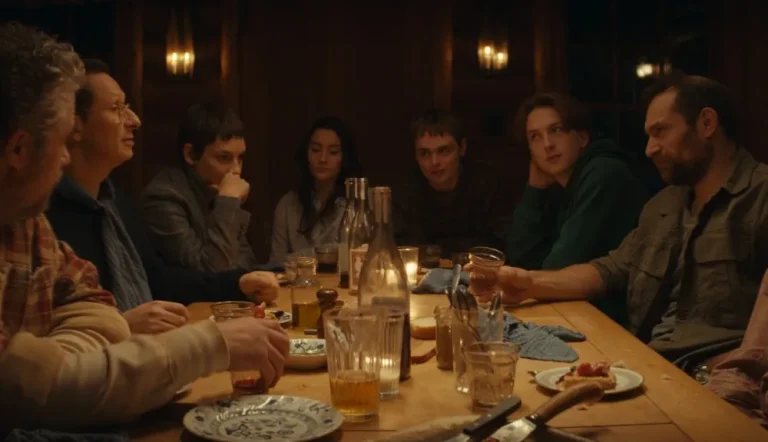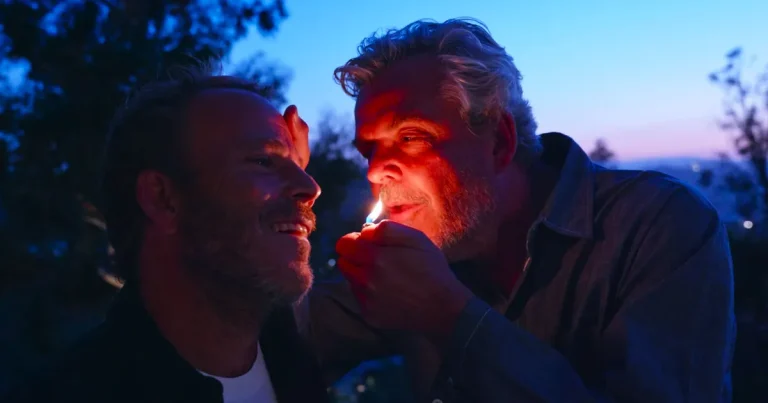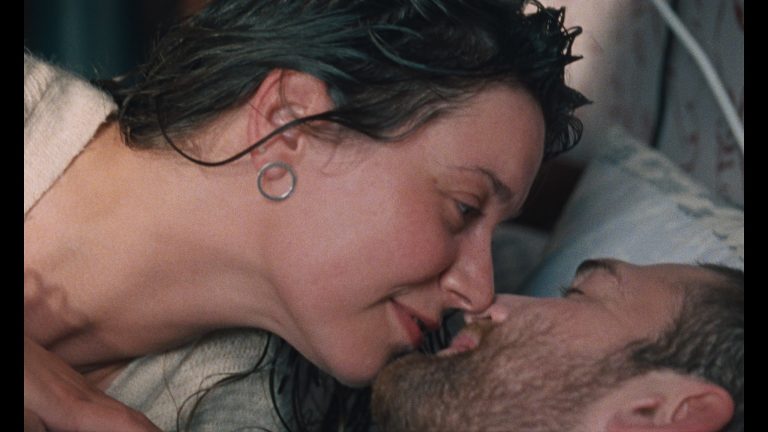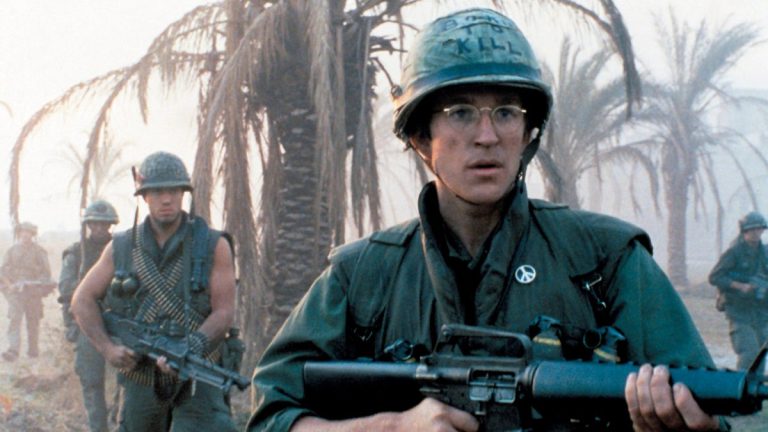Frankenstein is director Guillermo del Toro’s third adaptation in a row, and the seams might be starting to show. His adaptation of Mary Shelley’s seminal work seems like a marriage made in heaven – this is purportedly a long-time dream project of del Toro’s – and for a time, it is. It’s an exceptionally well-made, gorgeous, gothic, often gory retelling of a familiar story that flirts with greatness but is undermined by some low-rent CGI and on-the-nose storytelling.
There’s much to admire here, from a game cast to strong atmosphere and a menacing, ominous tone. The story picks up in the Arctic, as a ship trapped in ice is alerted to a campfire and the remnants of a struggle that’s left a lot of human blood on the ice, as well as a battered, injured body that the captain orders taken aboard. From there, del Toro sets the stage with a propulsive, limb-tearing action set piece before tucking into a retelling from multiple perspectives.
Del Toro’s “Frankenstein” is more beholden to the book than to past cinematic adaptations. The monster here is considerably different than the hulking, neck-bolted beast played by Boris Karloff that’s defined the character for nearly the last hundred years. Indeed, “Frankenstein” is at its strongest when it balances del Toro’s creativity with Shelley’s tale. It’s a melding of two kinds of macabre into a story until that same quality makes it into a tepid, half measure. At first, at least, it’s not afraid to dance in the darkness.

The Frankenstein of the title is none less than Oscar Isaac, whose mad doctor narrates his journey from grief-stricken, morose child to brilliant, maniacal scientist with a mix of shame, pride, and resignation. The film feels at its strongest in these origin moments, when del Toro gleefully animates the cruel, death-ridden gothic world in which the titular doctor thrives. Moments of Isaac’s Frankenstein callously sizing up men on the gallows and scouring war zones for the perfect specimen drip with dark humor and a wry joy. We are firmly in del Toro’s happy place, as he injects a million details and flourishes into the gothic setting that Shelley established long ago.
Also Read: 7 Classic Vampire Movies To Watch If You Loved ‘Nosferatu’
A game cast leans into the melodrama, with opportunities to shine. Charles Dance and Christoph Waltz play familiar roles with zest and glee – Dance once again the stern parent and Waltz another eccentric enabler – while Isaac’s Frankenstein swings between understated and assertive to make a wretch of a man somehow charming. Mia Goth plays one of two female characters – an antecedent of the manic pixie dream girl who loves insects and sees beauty where others see monstrosity – and who provides much of the thrust for the battle that erupts between man and monster.
Felix Kammerer is the younger Frankenstein brother, whose earnestness and decency make him a foil for the wickedness in store, but it’s the monster itself, played by Jacob Elordi, that’s likely to draw the most attention.
The central monster gets the heartthrob treatment (“Twinkenstein” as one Venice-goer wrote on the review wall) as del Toro fashions the creation into a gangly, lanky, patchwork of muscle, skin, and sinew. The final design splits the difference between gaze-y and grotesque, and Elordi’s performance does well in depicting the journey from feral, man/beast-child to longing, rageful, battered soul. Goth’s character instantly sees the creature as an innocent. del Toro is prone to agree, and this is part of where the film drifts off.
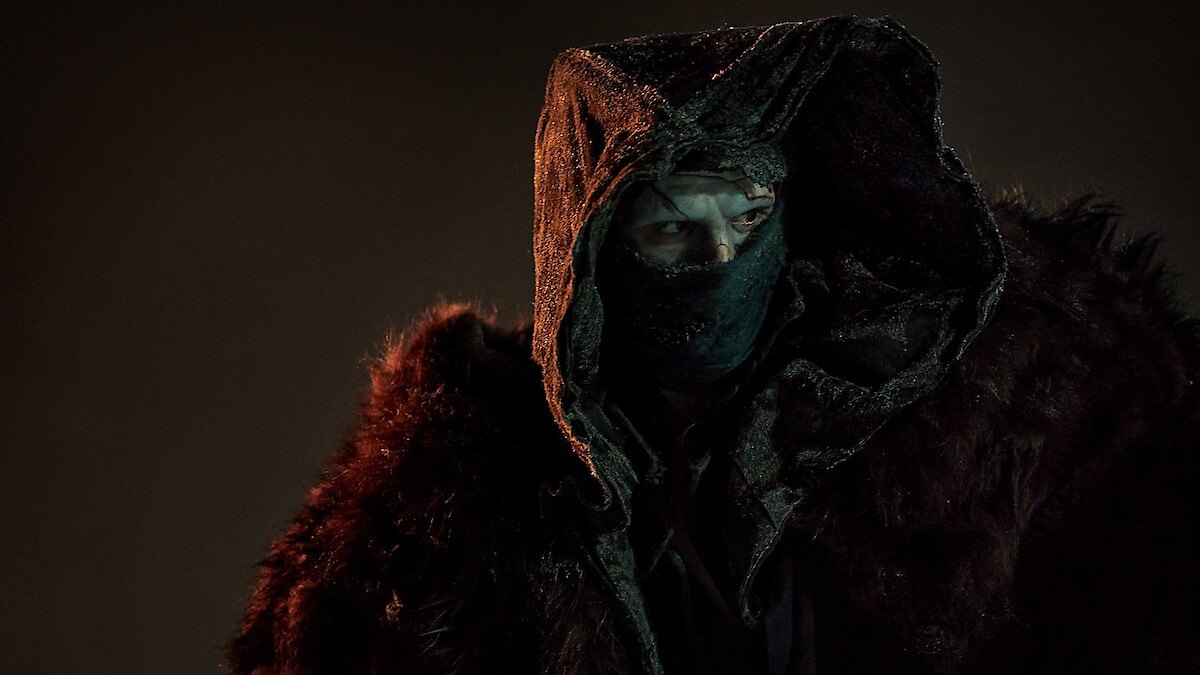
Following “Nightmare Alley” and “Pinocchio,” del Toro’s latest adaptation is adoring and beholden to its source material, almost to a fault. Unlike his “Creature from the Black Lagoon” riff, “The Shape of Water,” there’s almost too little del Toro here. The parts that do stand out are those that add enough to the familiar proceedings to make them feel new and exciting, or at least less predictable. This “Frankenstein” falls short of the inventive reimagining that lent “The Shape of Water” its distinct magic, and it lacks the meticulous craft and brooding intensity that made last year’s “Nosferatu”—another retelling of an oft-worn tale—so hauntingly immersive.
Indeed, the biggest problems with “Frankenstein” are that its straightforward storytelling and adherence to melodrama don’t overcome its flaws. The film often looks brilliant, but too often tips over into the uncanny valley of computer game or screensaver graphics. Some shots are beautiful. Others look like rushed pixel jobs that only make the melodrama onscreen tip well over into camp.
Similarly, the tone of the film might be controlled and deliberate, but it’s sometimes too on the nose. A final catharsis is heavily telegraphed mid-way through. Multiple characters deliver unsubtle, who’s-the-real-monster monologues before croaking off, and the final emotional beats feel somewhat unearned. All of this might be excusable in a stronger film, but “Frankenstein” lingers awkwardly in the uncanny valley on multiple levels. It never truly breathes life into the story.
Which isn’t to say that it’s bad. Del Toro crafts a handsome, sumptuous, eerie work of film. It’s one of the strongest adaptations of Shelley’s work, but it has the misfortune of being released in the wake of more clever, edgy, out-there interpretations that can’t help but make it feel a bit quaint. Del Toro eschews horror for gothic beauty, tragedy, and the pathos of the story.
It’s at first exhilarating, then it’s familiar and occasionally corny. With Netflix’s backing and Elordi’s heart-throb status, this retelling could easily define the story for a generation, yet it plays out as a staid, diminished tableau for del Toro’s imagination. This might be a Guillermo del Toro film as the poster says, but it’s very much Mary Shelley’s Frankenstein.

